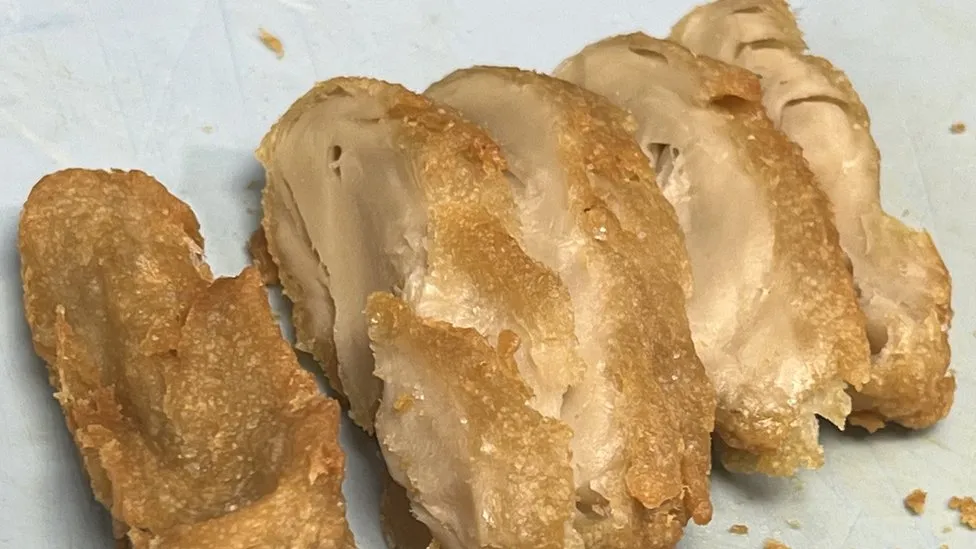Welcome to our Article Website - For latest Technology related News and Advancements in Gadgets and Gizmos, IT, AI, Health, Science, Engineering, Entertainment, SEO Marketing, Work from Anywhere and also Business. Our Curated Collection of Online Learning Articles Offers Top-Notch Insights and Resources.
Translate to your Mother Tongue and Enjoy my Articles
Tuesday, June 13, 2023
Singapore: Leading the Way in Lab-Grown Meat - Exploring the Viability, Challenges, and Potential of Cultivated Protein
Singapore's unique status as the sole country selling lab-grown meat showcases its dedication to innovation and sustainable food sources. The approval of cultivated meat in Singapore has paved the way for further advancements and the commercialization of this alternative protein. Although challenges persist, including scaling up production and addressing environmental concerns, ongoing investments and research endeavors are driving the industry forward.
Over time, cultivated meat has the potential to become a viable and sustainable option for meat consumption on a global scale. However, achieving this goal necessitates collaboration among private companies, governments, and scientific institutions, along with a commitment to transparency, research, and technological innovation. The path toward a future centered on lab-grown meat may be uncertain, but the potential benefits for animal welfare, the environment, and human health make it a venture worth pursuing.
Why Singapore is the Only Place in the World Selling Lab-Grown Meat
Singapore stands out as the only country where lab-grown meat has been approved for public sale, with California-based Eat Just leading the way. This article explores the reasons behind Singapore's unique position and discusses the challenges and potential of cultivated meat as a sustainable food source.
The Approval Process in Singapore:
Eat Just, the pioneering company in lab-grown meat, received regulatory approval from the Singaporean authorities in December 2020, making it the first and only country to allow the sale of cultivated meat. This approval demonstrates Singapore's commitment to innovation and its willingness to embrace alternative food sources. The stringent regulatory framework in Singapore ensures the safety and quality of cultivated meat, paving the way for its introduction to the public.
The Process of Cultivated Meat Production:
Unlike plant-based substitutes, lab-grown meat is actual meat that is produced through a complex scientific process. Cells are extracted from an animal and then nourished with proteins, sugars, and fats in a lab. These cells are allowed to divide and grow before being transferred to a bioreactor, which acts as a fermentation tank. After several weeks, the cultivated meat is harvested, processed, and shaped into the desired form using techniques like 3-D printing. The result is a product that closely resembles conventional meat in taste and texture.
Taste and Consumer Feedback:
Huber's Butchery and Bistro in Singapore is the only restaurant in the world to offer cultivated meat on its menu. Customers' feedback on the taste and quality of the cultivated meat has been positive, with many expressing surprise at how closely it resembles real meat. The restaurant owner reports "phenomenal" feedback from customers, indicating that lab-grown meat has the potential to satisfy consumers' expectations. Some minor concerns raised include the high cost and the need to increase production to make cultivated meat more widely available.
Challenges in Scaling Production:
One of the primary challenges facing the cultivated meat industry is scaling up production to meet market demand. Currently, the production capacity of companies like Eat Just is significantly lower than that of traditional meat producers. The cost of producing cultivated meat remains high, making it less economically viable compared to conventional meat. However, companies like Eat Just are actively working to reduce production costs and increase capacity. Ongoing advancements and investments are expected to drive down costs and improve efficiency, eventually making cultivated meat more affordable and accessible.
Sustainability and Environmental Impact:
Cultivated meat has the potential to address the environmental concerns associated with traditional meat production. By reducing reliance on land and livestock, it could help mitigate carbon emissions and other negative impacts. However, the energy-intensive nature of the current cultivation process raises questions about its overall environmental benefits. Studies have suggested that lab-grown meat production may generate significant carbon emissions, even more than traditional beef production. Nevertheless, the cultivated meat industry is focused on improving its processes and technologies to ensure a more sustainable and efficient production system.
Scientific Scrutiny and Realistic Forecasts:
While cultivated meat companies present a promising narrative, scientists emphasize the need for rigorous scientific analysis and realistic forecasts. Ricardo San Martin, co-director of the Alt: Meat Lab at the University of California, Berkeley, points out that the industry must provide robust scientific evidence and demonstrate long-term viability to secure ongoing funding and government support. Transparency and honesty are crucial in building trust and ensuring the continued growth of the cultivated meat industry.
Conclusion:
Singapore's unique position as the only country selling lab-grown meat reflects its commitment to innovation and sustainable food sources. The approval of cultivated meat in Singapore opens the door for further advancements and commercialization of this alternative protein source. While challenges remain, such as scaling up production and addressing environmental concerns, ongoing investments and research efforts are propelling the industry forward.
With time, cultivated meat has the potential to become a viable and sustainable option for meat consumption worldwide. However, achieving this goal will require collaboration between private companies, governments, and scientific institutions, along with a commitment to transparency, research, and technological innovation. The journey toward a future of lab-grown meat is still uncertain, but the potential benefits for animal welfare, the environment, and human health make it a bet worth taking.
Subscribe to:
Post Comments (Atom)
Beyond the Womb: Exploring the Brave New World of Artificial Wombs
As I flipped through the morning newspaper, a particular report grabbed my attention, uncovering a captivating yet intricate frontier in re...

No comments:
Post a Comment